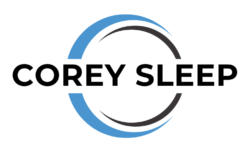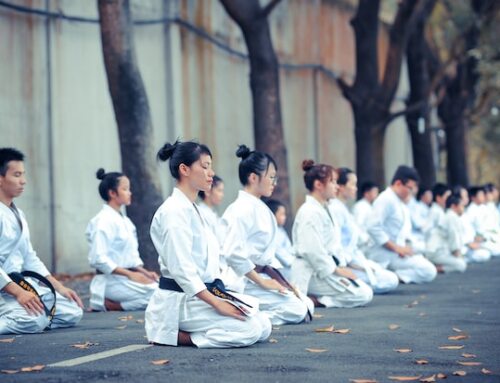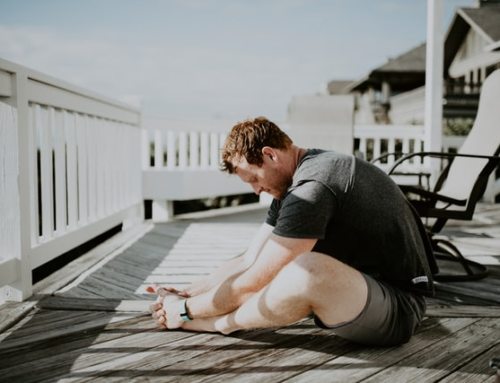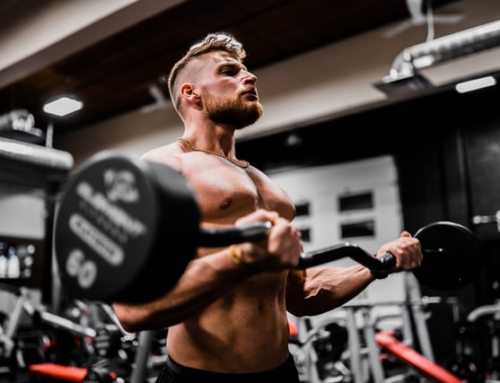Most think that cardio is your best friend for weight loss and muscle definition.
In reality, there’s no one way to lose weight or look more toned. In fact, if there is a way to improve muscle definition, it probably involves less of the traditional cardio approaches than you’d think.
With this post, I want to tackle the question of looking toned: how do I exercise to make my body look more toned and lean? In other words, how can I improve muscle definition?
What does it mean to be “toned”?
This question might seem simplistic at first: isn’t becoming toned about losing weight?
Well, yes and no.
Leanness or a toned look is basically visible musculature and tight skin. The skin on your body, instead of having a bunch of fat underneath, which makes you look soft, becomes tighter on the bones and muscles of the body, making things look more defined (i.e. “toned”).
Problems arise when we think of lean or toned bodies as simply lower in body fat because a couple of other factors affect muscle definition. Specifically, muscle size actually affects one’s ability to hold a toned look.
This makes sense given our above definition: skin is going to look tighter if there’s a bigger muscle underneath, and most people miss this. They think they simply have to lose the fat that’s between the skin and the muscle to look toned.
That’s definitely one of the major factors, to be sure. But bigger muscles can help you look more toned and may even improve the lean look that you have. They may even mean that you have to lose less fat in order to get the look that you want.
Who wouldn’t want to do less work for the same result??
If I have bigger muscles that add shape to my frame, the fat that I do have on my body is more likely to spread out. This might make for a more natural and healthy toned look, rather than the hyper-skinny look that could result from very low body fat and smaller muscles.
Exactly what you *should* look like is up to you. Some want smaller muscles, and that’s fine.
There’s really no one way to do it. Generally, I wouldn’t recommend a very low body fat percentage. Not only is it somewhat unhealthy (probably) – it also doesn’t look as good as you’d think. Simply put, super skinny is just not an attractive look.
So now that we understand what being toned looks like, the question becomes: how do I get or keep bigger muscles in order to achieve this toned look that I want?
Here are a couple of ways to improve muscle definition.
Approach Number 1: Bulk and Cut.
If you already lack the muscle mass you desire, you may wish to accelerate the muscle growth process. To do that, consider limiting your cardiovascular training and focus on resistance training several times a week. For nutrition, you’ll want to be getting adequate protein but also adequate calories to help feed muscle growth. This means you’ll want a surplus of calories, so you’ll want to estimate how much you need for maintenance and then aim above that.
I’m not a big calorie counting guy since it’s a tough thing to do. For me, when I’m looking to build muscle, I focus on eating healthy whole foods and eating lots of them – especially protein-dense ones like meat.
The problem with this is you may get some unwanted weight if you go too far in excess. For me, that’s okay, since I’ll just be cutting the weight later. And if you’re sticking to lower-sugar foods and eating healthy, then the fat gained will be minimal. Plus, if you’re working hard to build muscle, the weight will be lost that much more easily when you go to trim things down.
SPECIFICS:
Consider starting with total body training twice a week, then upping that to about 3x a week, always giving the body 48 hours rest between your next workout.
Approach Number 2: The Slow Burn (And… Build?)
Some are happy with their current muscle mass, or at least don’t want to add too much more. Their focus, therefore, is going to be losing fat mass in order to achieve a more toned look.
Again, I mentioned this in the resistance training post, but you’ll still want to have a solid resistance training regiment. I still recommend a full-body routine twice a week to ensure you’re maintaining muscle mass, since that is your goal.
Once again, if you’re trying to lose weight but not training muscles, you might lose more muscle and possibly lose less fat as a result… shattering your toned-look hopes before you even start.
However, if you’re adequately training your skeletal muscles and adding cardio to your workout routines, you’ll double up on calories burned and, therefore, increase fat loss. Resistance training will help you maintain those muscles (which aid in calorie burning and will help you achieve the tight-skin look) while losing fat (again adding to that tight-skin look). Cardiovascular training on top of resistance training will add fat loss and, of course, add a whole slew of benefits for the body and build endurance.
What you’ll want to change for this approach is making sure you are in slight to moderate calorie deficit. Simply exercising may be enough, but you’ll want to at least have an idea of your daily calorie burn and intake so that you are using more than you are consuming.
SPECIFICS:
Keep up total body resistance training 2x a week while adding a moderate amount of cardiovascular training. Start with baby steps: 10-20 minutes on the treadmill before/after your resistance training, or doing a YouTube fitness video at home. See below for more thoughts on how to incorporate cardio in your routine.
For nutrition: try counting calories for a few days and use an online calculator to determine what a good calorie goal each day would be. Then, make incremental adjustments to get yourself there.
OPTION: What Kind of Cardio?
While most people think of cardio as just running (treadmill or otherwise) or biking or elliptical use, etc., it’s important to think about what kind of cardio that you want as part of your lifestyle.
This is important for a few reasons: time, preferences, performance and suitability.
I’d like to go in-depth on this in another post, but for now, ask yourself one question:
What kind of cardio will I actually do?
This is one of the most important questions whenever it comes to building new habits. After all, the best habits are the ones you’ll actually do.
A lot of people don’t like running. Others don’t want to spend 30+ minutes on a treadmill/bike/elliptical every day and would rather be outside.
Moreover, those activities require even more motivation than usual if you’re going to push yourself and get real benefits. An easy run is, well, easy, but a harder run will give you greater health returns.
But they’re hard.
My point here is this: pick something you think you could learn to enjoy – and then do it!
For the above reasons, I recommend some sort of guided High-Intensity Interval Training (HIIT).
These guided routines are easy to find on YouTube or in certain gym facilities and are usually relatively short in duration. My roommate managed to lose a bunch of weight and maintain or build muscle mass through Apple Fitness videos. He’d do a HIIT video followed by a weight training video, each only 20 minutes, every other day.
That hits both of the principles I suggested: some cardio and resistance training. Plus, it only takes 40 minutes every other day and can be done from home.
HIIT training is far more efficient than your everyday treadmill or even run. You’ll burn more calories and challenge your cardiovascular system more in less time. Plus, if you’re doing a guided routine you don’t have to worry about figuring out intensity or programming on your own. Somebody else does that for you; you simply have to follow along and do the work.
That’s just easier on the brain, meaning you’re far more likely to do it. You can also do them at home, often at little to no extra cost, unlike buying a gym membership.
The downside is that these workouts can be more challenging than just “going for a run,” where you decide the pace. But that’s part of the point – no challenge usually means minimal benefit.
There’s one final benefit to HIIT training over usual cardio: how it trains your muscles.
I’ve mentioned several times now that cardio without resistance training may cause muscle loss. HIIT training tends to train muscles in a similar fashion as resistance training; that is, it builds fast-twitch muscle fibres. This means you’ll keep some of that muscle size more easily than if you were only doing long-range, lower-intensity cardio.
This is why sprinters look jacked and long-distance runners… well, not so much.
There’s more to this conversation, especially on the nutrition front. Google is your friend for determining exactly how much protein you should be having, or how much of a calorie surplus is ideal for muscle building vs maintenance. Do your research and see what works for you. I’ll tackle this stuff in the future, so make sure you sign up for future updates!
This post is part of a series:
Stop Using the Scale: An Argument for Measuring Fitness by Appearance Instead of Weight





